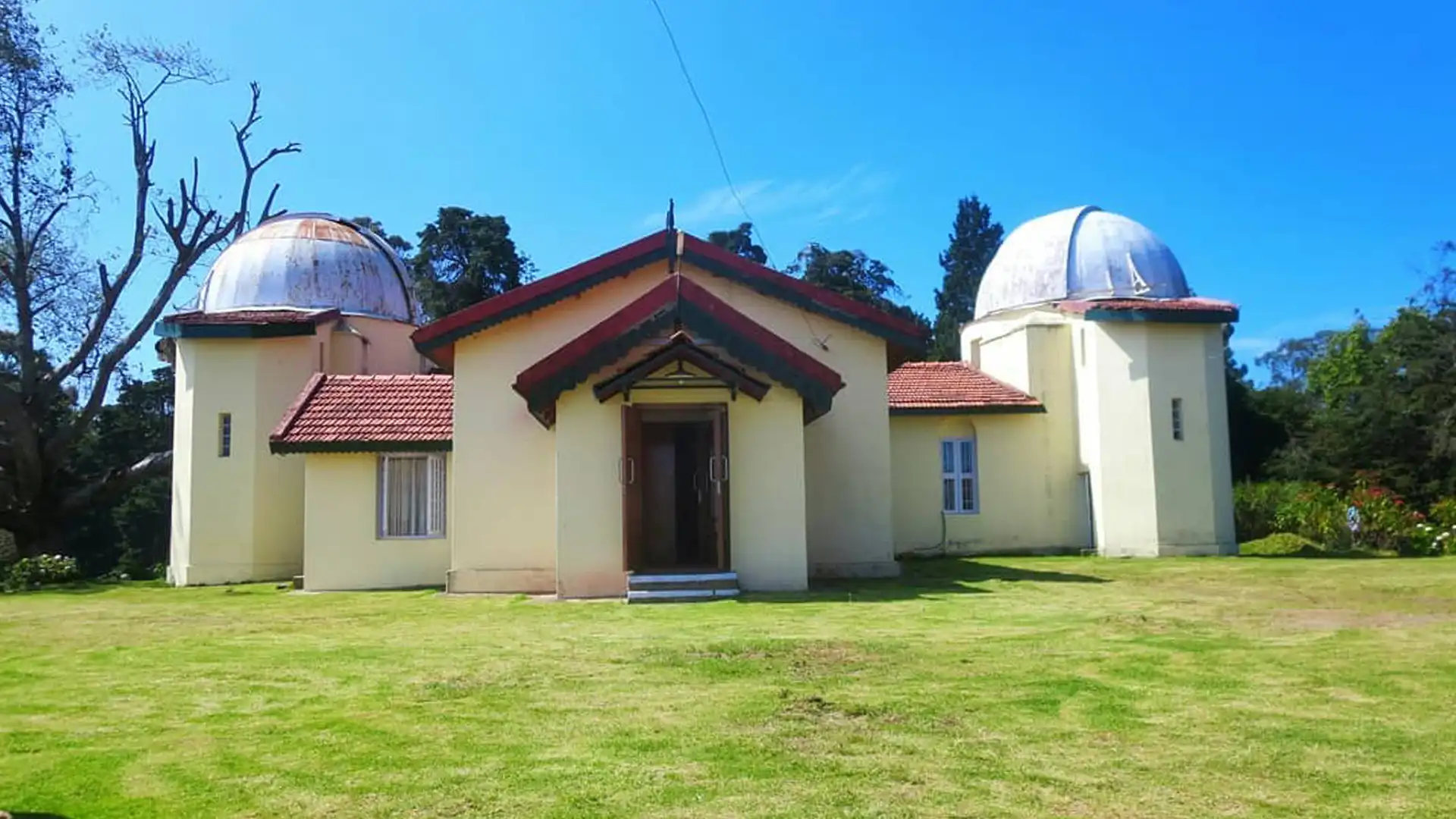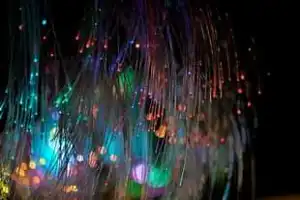Blog Credit: Trupti Thakur
Image Courtesy: Google
The KodaiKanal Solar Observatory – KOSO
The Kodaikanal Solar Observatory is a solar observatory owned and operated by the Indian Institute of Astrophysics. It is on the southern tip of the Palani Hills 4 kilometres (2.5 mi) from Kodaikanal.
The Kodaikanal Solar Observatory (KoSO) is a solar observatory located in Kodaikanal, Tamil Nadu. Established in 1899, it is one of the oldest solar observatories in the world and has been at the forefront of solar research for over 125 years. The observatory, which celebrates its 125 years of existence, is currently operated by the Indian Institute of Astrophysics (IIA), Bengaluru.
The Evershed effect was first detected at this observatory in January 1909. Solar data collected by the lab is the oldest continuous series of its kind in India. Precise observations of the equatorial electrojet are made here due to the unique geography of Kodaikanal.
Ionospheric soundings, geomagnetic, F region vertical drift and surface observations are made here regularly. Summaries of the data obtained are sent to national (India Meteorological Department) and global (World Meteorological Organization, Global Atmosphere Watch) data centers.
They have a full-time staff of two scientists and three technicians.
History
As early as 1881, Mr. Blanford, then Meteorological Reporter to the Government of India, recommended “the improvement of the work of solar observations in order to obtain accurate measures of the sun’s heating power at the earth’s surface and its periodic variations”. In May 1882, the government astronomer at Madras, Norman Robert Pogson, proposed the need for photography and spectrography of the sun and the stars using a 20-inch (51 cm) telescope, which could be at a hill station in South India.
On 20 July 1893 following a famine in Madras Presidency, which underscored the need for a study of the sun to better understand monsoon patterns, a meeting of the U.K. Secretary of State, Indian Observatories Committee, chaired by Lord Kelvin, decided to establish a solar physics observatory at Kodaikanal, based on its southern, dust free, high altitude location. Michie Smith was selected to be superintendent. Starting in 1895 there was a rapid transfer of work and equipment from the Madras Observatory to Kodaikanal and the observatory was founded on 1 April 1899.
The first observations were commenced at Kodaikanal in 1901.
A 12 m solar tower with modern spectrograph was established in 1960 by Amil Kumar Das and used to perform some of the first ever helioseismology investigations. Measurements of vector magnetic fields were initiated during the 1960s.
In 1977, many of the astronomers from Kodaikanal shifted to Bangalore and established the Indian Institute of Astrophysics.
The need for a solar observatory in India was first recognized in the late 19th century, following the Great Drought of 1876-1878. The Madras Observatory, established by the British East India Company in 1792, had been recording astronomical observations, but a dedicated solar observatory was deemed necessary to study the relationship between solar activity and India’s monsoon patterns.
In 1893, the British Government sanctioned the establishment of a Solar Physics Observatory under the meteorological budget. The site selection process, led by Charles Michie Smith, a professor at Madras Christian College, eventually chose Kodaikanal as the ideal location due to its favorable weather conditions and clear skies.
The observatory’s foundation stone was laid in 1895 by Lord Wenlock, the then Governor of Madras. Regular observations began on March 14, 1901, with Charles Michie Smith serving as the first director of KoSO.
Current activities
Areas of current interest at the observatory are
- Observations and interpretation of the morphological changes in active regions and their role in occurrence of transients such as solar flares.
- Study of contributing factors to chromospheric calcium K indices.
- Measurement of vector magnetic fields.
- Photographs of ~ 117 years are being digitized for long-term studies of the last ten solar cycles, in an effort led by Dipankar Banerjee.
- Studies on the structure and dynamics of the equatorial ionosphere and its response to the solar and interplanetary variability are being carried out.
- Studies of the equatorial electrojet and of the structure and dynamics of the equatorial ionosphere and its response to solar and interplanetary variability are being made.
- Hourly observation of surface temperature, pressure and rainfall are made here and transmitted to the India Meteorological Department and the World Meteorological Organization for use in Weather forecasting and research in the atmospheric sciences.
- Public education about astronomy including tours of the facility, access to the astronomy library, nighttime telescopic sky viewing, and presentation of specialized university-level courses, seminars and workshops.
Instruments and Observations
Over the years, KoSO has housed several important instruments, including:
- Bhavnagar Telescope:A 16-inch Newtonian/Cassegrain telescope, which was the largest in India from 1888 to 1968.
- Spectroheliograph:Used for studying the Suns chromosphere and prominences.
- H-alpha Telescope: For full-disc imaging of the Sun.
- White Light Active Region Monitor (WARM):Enables simultaneous observations of the photosphere and chromosphere.
The observatory has made significant contributions to solar physics, including:
- The discovery of the Evershed effect by John Evershed, who served as the director of KoSO from 1911 to 1922.
- Regular sunspot observations and measurements of solar radiation.
- Spectroscopic studies of the solar chromosphere and prominences.
Digital Archive
KoSO maintains a vast archive of solar data, with observations spanning over a century. In recent years, the observatory has undertaken a digitization project to preserve and make accessible its valuable collection of solar images.
- The digital archive contains over 1.48 lakh digitized solar images, amounting to 10 terabytes of data.
- The collection includes 33,500 white-light images of sunspots and thousands of other solar images recorded daily since the early 20th century.
KoSOs digital archive is one of the most comprehensive and longest-running solar data collections in the world, with a coverage of more than 75% of the period.
Current Status and Research
Today, KoSO continues to be a premier institution for solar research in India. The observatory is equipped with state-of-the-art instruments and is actively involved in various national and international collaborations.
Some of the current research areas at KoSO include:
- Solar activity and its impact on space weather
- Study of solar flares and coronal mass ejections
- Investigation of the solar magnetic field and its evolution
- Solar-terrestrial relationships and their influence on Earths climate
The observatory also plays a crucial role in training and education, hosting workshops, and providing research opportunities for students and scientists from India and abroad.
Blog By: Trupti Thakur

09
AprThe KodaiKanal – KOSO
Apr 09, 2024Recent Blog
The TechKritiApr 26, 2025
India’s First Quantum Computing VillageApr 24, 2025
India’s Achievement In QKDApr 22, 2025
The V2G TechnologyApr 21, 2025
Country’s Specific Domain By GoogleApr 19, 2025




